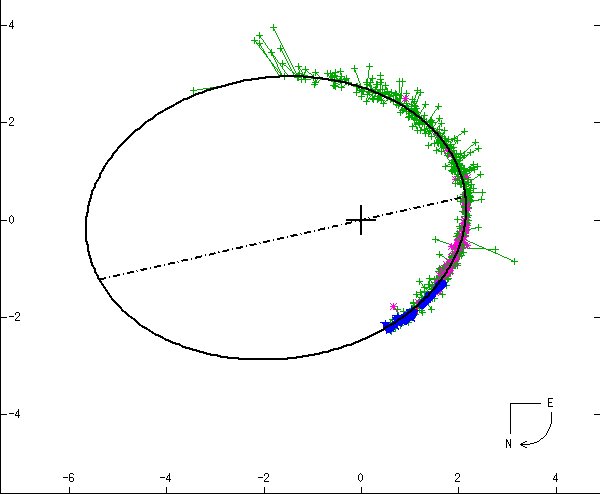
 |
Slightly fainter Mu Draconis B appears here to orbit Mu-A (at the cross), though in reality the two orbit a common center of mass halfway between them every 672 years at an average separation of 109 Astronomical Units, the high eccentricity causing the distance to change by a factor of 2.5. A tilt to the plane of the sky of 35 degrees distorts the orbital shape. The nearly identical white stars make a fine sight in a small telescope. From the Sixth Catalog of Orbits of Visual Binary Stars , W. I. Hartkopf and B. D. Mason, US Naval Observatory Double Star Catalog, 2006. |